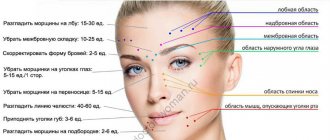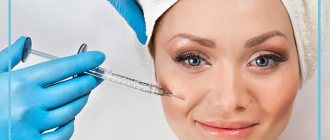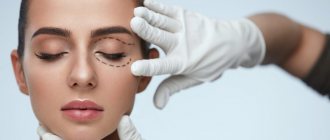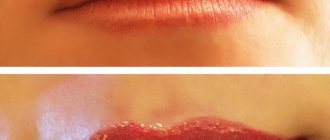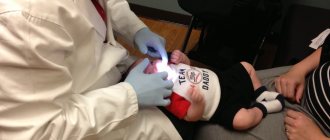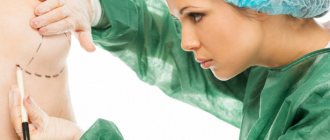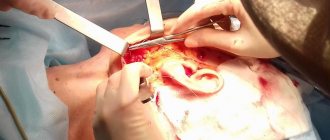Lymphostasis is currently considered as an independent disease, which has its own code in the ICD classification and is characterized by pathological accumulation of lymph in the intercellular space, which occurs due to a violation of the natural outflow of lymph and is accompanied by an increase in the volume of the affected organ.
There are currently many known reasons for the development of lymphostasis, and one of them is surgical intervention for cancer, including removal of lymph nodes regional to the tumor. This article will consider a special case of lymphostasis - lymphostasis of the upper limb after mastectomy.
Causes of hand lymphedema
Surgery to remove the mammary gland.
Photo: romanzaiets / freepik.com During a mastectomy, not only the mammary gland, but also lymph nodes and blood vessels can be removed. But lymph (tissue fluid that is necessary to cleanse our body of waste products) still needs to continue moving, so it seeks its path through other lymphatic vessels that were not damaged during surgery. As a result, on the side of the operation, the lymph flow slows down sharply and swelling in the arm begins to develop. The degree of development of postmastectomy edema depends on the number of lymph nodes removed, as well as on how significant the lymphatic vessels were in the initial outflow of lymph.
Figure 1. Axillary lymph nodes. Source: brgfx / freepik.com
Diet and diet
Since disease, severe surgery and chemotherapy deplete the body, to ensure its normal functioning and replenish energy, biologically active substances are needed - vitamins, microelements, complete proteins, pectins. The basis of the diet should be well-digestible foods without preservatives and dyes. An important aspect is the drinking regime, the daily requirement of clean water is at least 1.5-2 liters.
Meals are fractional (5-6 times a day) and in small portions. Boiled, baked or steamed products. 2/3 of the plate is occupied by legumes or vegetables: cabbage, mushrooms, tomatoes, zucchini, potatoes, leafy greens. Whole grains, fruits, and berries are good for health. The remaining third includes proteins of animal origin:
- fresh fish;
- chicken, quail eggs;
- low-fat and low-fat dairy products;
- white dietary meat chicken, turkey;
- lean red meat (no more than 2 times a week).
If desired, replace animal proteins with tofu and nuts.
We recommend taking VIALIFE capsules or VIALIFE solution, because they contain the highest possible concentration of chlorophyll, which:
- strengthens the immune system;
- enhances cell regeneration;
- saturates tissues with oxygen;
- has antioxidant, anti-inflammatory, detoxifying effects.
Important! Take care of your hand and avoid bruises, scratches, injuries and heavy loads
Heavy loads very often become a provoking factor for swelling of the arm after a mastectomy, as they contribute to the expansion and overload of both venous and lymphatic vessels. Moreover, it is important to avoid both lifting heavy objects and repeating monotonous hand movements. The most serious complication of lymphedema is erysipelas. This is an infection of the skin and subcutaneous tissue, causing fever, redness of the hand, poor health, provoking a sharp and persistent increase in swelling of the hand. Once occurring, this severe infection can recur again and again. Streptococci, which cause erysipelas, are ubiquitous, including in the air, and all people encounter them regularly. But the risk of developing an infection increases sharply with various skin injuries (bruises, injuries) and in the presence of lymphedema. It turns out that the swelling provokes erysipelas, and the infection, in turn, increases the swelling. Breaking this “vicious circle”, even with complex treatment, can be difficult even for experienced specialists.
What are the signs that indicate lymphedema is developing?
The main manifestation of lymphostasis (stagnation of lymph) is swelling, which can appear almost immediately after surgical treatment or months and years after it. At the initial stage of the disease, it is always painless and primarily affects the forearm and hand. According to external signs, the hand becomes swollen; marks on the skin from rings or a wristwatch bracelet may remain.
If lymphedema is accompanied by pain, this should alert you. First of all, pain is the reason for additional research and consultation with an oncologist (to exclude a recurrence of the underlying disease). Regarding the treatment of lymphedema, you need to contact a lymphologist and this issue should not be delayed. At the early stage of edema development, irreversible changes in the skin and subcutaneous tissue have not yet occurred. The swelling is mild, it is much easier to cope with it than later, when the swelling becomes denser and goes away very reluctantly.
Stages of lymphostasis
There are four stages of the process depending on how pronounced lymphostasis and changes in the skin and soft tissues of the upper limb are:
- Zero (subclinical). The swelling is mild and may spontaneously appear and disappear. There is practically no difference in the circumference of the upper limbs.
- First. Lymphostasis affects the hand and forearm, the difference in the circumference of the upper limbs is less than 4 cm. The skin pattern is smoothed out.
- Second. Lymphostasis affects the entire upper limb, the difference in the circumference of the healthy and diseased arm is from 4 to 6 cm. At this stage, trophic changes in the skin are observed in the form of dryness and changes in skin color, reduction in hair, and the addition of a secondary infection is also possible (for example, fungal infection nails).
- Third. The difference between a healthy and affected limb is more than 6 cm. The skin is significantly changed, trophic ulcers and lymphorrhea may appear, adipose tissue is compacted.
Diagnosis and treatment of lymphedema
Stages of treatment
Treatment of lymphedema after mastectomy should be comprehensive and consist of several stages. The first is consultation and diagnosis with a lymphologist. At the appointment, the doctor determines the density of the swelling and takes measurements of the arm, which will be required to control the process of reducing swelling in the future. If necessary, ultrasound angioscanning of the upper extremities is performed.
Lymphedema of the arm after treatment for breast cancer. Photo: Lymphatic Research and Biology / Open-i (Creative Commons Attribution-NonCommercial 4.0 International license)
The second stage is improving the outflow of fluid from the hand. For this purpose, complex non-drug therapy is used all over the world, the basis of which is manual lymphatic drainage and limb bandaging. However, the lymphologist selects the specifics of the procedures, duration, number of sessions, and additional treatment methods taking into account the individual characteristics of each specific patient.
After the process of reducing swelling is completed, the final stage begins - the selection of compression hosiery according to special measurements. Elastic compression is an important component of effective treatment. In the treatment of lymphedema, a completely separate type of flat-knit compression hosiery is used. It has a low degree of elongation, holds its shape and functions as a bandage.
Is it possible not to treat?
If lymphedema is not treated, then in addition to fluid, protein molecules will gradually accumulate in the tissues, which cannot be “cleaned out” on their own. Professional medical assistance is required here. With the accumulation of protein molecules, fibrosis begins to develop - irreversible tissue changes.
Compression jersey. Photo: Science History Institute / (Creative Commons Attribution-Share Alike 3.0 Unported license)
Diagnostics
As with any pathological condition, the diagnosis of lymphostasis begins with collecting an anamnesis, in which special attention is paid to the volume of surgical intervention performed, the timing of its implementation, as well as the timing and volume of radiation therapy, if it was performed. A physical examination is performed, including:
- measuring the circumference of the edematous limb at the site of maximum edema;
- measuring the circumference of both limbs in three places (at a distance of 10 cm above the lateral epicondyle of the humerus, 10 cm below the lateral epicondyle of the humerus, in the central part of the metacarpus) for comparative purposes;
- measuring the range of motion in the shoulder joint;
- assessment of muscle strength using a dynamometer.
The following instrumental diagnostic methods are used:
- ultrasound diagnostics of blood vessels of the upper limb;
- lymphoscintigraphy with technetium, used to directly assess the condition of the lymphatic vessels;
- A more informative method compared to the previous one is fluorescent lymphography using indocyanine green as a contrast agent.
In addition, the capabilities of magnetic resonance imaging in the diagnosis of lymphostasis and damage to surrounding soft tissue structures are being explored.
Prevention
In some cases, swelling can be completely removed, sometimes only reduced. Further preventive and supportive recommendations on the regimen of wearing compression hosiery, performing therapeutic exercises, nutrition, etc. depend on this.
To date, there is no lifelong cure for lymphedema, because its root cause is the removal of lymph nodes and damage to the lymph drainage pathways. Medicine is not yet able to restore them. Therefore, preventive examinations by a lymphologist and following simple recommendations will allow you to maintain a normal appearance of the hand, good health, and avoid the development of complications.
The editors thank the specialists of the Phlebology Center clinic for their assistance in preparing the material.
Main stages
Rehabilitation tactics consist of four transitions:
- Preparatory – pain relief, normalization of well-being, exercise therapy and physiotherapy, selection of the next option.
- Therapeutic – steps aimed at raising defenses and preventing complications.
- Early recovery – assessment of the results obtained from previous treatment. Activation of metabolism, the functioning of all organs and systems, neutralization of side effects after taking cytostatics, adaptation to the consequences of mastectomy. Prescription of appropriate medications, physical therapy, physiotherapy.
- Late recovery – aesthetic reconstruction or breast prosthetics, psychotherapy, socialization techniques, adherence to a diet together with supportive and anti-relapse therapy.
Sources
- Vos T., Allen C., Arora M., Barber RM., Bhutta ZA., Brown A., Carter A., Casey DC., Charlson FJ., Chen AZ., Coggeshall M., Cornaby L., Dandona L ., Dicker DJ., Dilegge T., Erskine HE., Ferrari AJ., Fitzmaurice C., Fleming T., Forouzanfar MH., Fullman N., Gething PW., Goldberg EM., Graetz N., Haagsma JA., Johnson CO., Kassebaum NJ., Kawashima T., Kemmer L., Khalil IA., Kinfu Y., Kyu HH., Leung J., Liang X., Lim SS., Lopez AD., Lozano R., Marczak L ., Mensah GA., Mokdad AH., Naghavi M., Nguyen G., Nsoesie E., Olsen H., Pigott DM., Pinho C., Rankin Z., Reinig N., Salomon JA., Sandar L., Smith A., Stanaway J., Steiner C., Teeple S., Thomas BA., Troeger C., Wagner JA., Wang H., Wanga V., Whiteford HA., Zoeckler L., Abajobir AA., Abate KH ., Abbafati C., Abbas KM., Abd-Allah F., Abraham B., Abubakar I., Abu-Raddad LJ., Abu-Rmeileh NM., Ackerman IN., Adebiyi AO., Ademi Z., Adou AK ., Afanvi KA., Agardh EE., Agarwal A., Kiadaliri AA., Ahmadieh H., Ajala ON., Akinyemi RO., Akseer N., Al-Aly Z., Alam K., Alam NK., Aldhahri SF ., Alegretti M.A., Alemu ZA., Alexander LT., Alhabib S., Ali R., Alkerwi A., Alla F., Allebeck P., Al-Raddadi R., Alsharif U., Altirkawi KA., Alvis- Guzman N., Amare AT., Amberbir A., Amini H., Ammar W., Amrock SM., Andersen HH., Anderson GM., Anderson BO., Antonio CA., Aregay AF., Ärnlöv J., Artaman A ., Asayesh H., Assadi R., Atique S., Avokpaho EF., Awasthi A., Quintanilla BP., Azzopardi P., Bacha U., Badawi A., Balakrishnan K., Banerjee A., Barac A., Barker-Collo SL., Bärnighausen T., Barregard L., Barrero LH., Basu A., Bazargan-Hejazi S., Bell B., Bell ML., Bennett DA., Bensenor IM., Benzian H., Berhane A ., Bernabé E., Betsu BD., Beyene AS., Bhala N., Bhatt S., Biadgilign S., Bienhoff K., Bikbov B., Biryukov S., Bisanzio D., Bjertness E., Blore J., Borschmann R., Boufous S., Brainin M., Brazinova A., Breitborde NJ., Brown J., Buchbinder R., Buckle GC., Butt ZA., Calabria B., Campos-Nonato IR., Campuzano JC., Carabin H., Cárdenas R., Carpenter DO., Carrero JJ., Castañeda-Orjuela CA., Rivas JC., Catalá-López F., Chang JC., Chiang PP., Chibueze CE., Chisumpa VH., Choi JJ ., Chowdhury R., Christensen H., Christopher DJ., Ciobanu LG., Cirillo M., Coates MM., Colquhoun SM., Cooper C., Cortinovis M., Crump JA., Damtew SA., Dandona R., Daoud F., Dargan PI., das Neves J., Davey G., Davis AC., Leo D., Degenhardt L., Del Gobbo LC., Dellavalle RP., Deribe K., Deribew A., Derrett S., Jarlais DC., Dharmaratne SD., Dhillon PK., Diaz-Torné C., Ding EL., Driscoll TR., Duan L., Dubey M., Duncan BB., Ebrahimi H., Ellenbogen RG., Elyazar I., Endres M., Endries AY., Ermakov SP., Eshrati B., Estep K., Farid TA., Farinha CS., Faro A., Farvid MS., Farzadfar F., Feigin VL., Felson DT., Fereshtehnejad SM ., Fernandes JG., Fernandes JC., Fischer F., Fitchett JR., Foreman K., Fowkes FG., Fox J., Franklin RC., Friedman J., Frostad J., Fürst T., Futran ND., Gabbe B., Ganguly P., Gankpé FG., Gebre T., Gebrehiwot TT., Gebremedhin AT., Geleijnse JM., Gessner BD., Gibney KB., Ginawi IA., Giref AZ., Giroud M., Gishu MD ., Glaser E., Godwin WW., Gomez-Dantes H., Gona P., Goodridge A., Gopalani SV., Gotay CC., Goto A., Gouda HN., Grainger R., Greaves F., Guillemin F ., Guo Y., Gupta R., Gupta R., Gupta V., Gutiérrez RA., Haile D., Hailu AD., Hailu GB., Halasa YA., Hamadeh RR., Hamidi S., Hammami M., Hancock J., Handal AJ., Hankey GJ., Hao Y., Harb HL., Harikrishnan S., Haro JM., Havmoeller R., Hay RJ., Heredia-Pi IB., Heydarpour P., Hoek HW., Horino M., Horita N., Hosgood HD., Hoy DG., Htet AS., Huang H., Huang JJ., Huynh C., Iannarone M., Iburg KM., Innos K., Inoue M., Iyer VJ ., Jacobsen KH., Jahanmehr N., Jakovljevic MB., Javanbakht M., Jayatilleke AU., Jee SH., Jeemon P., Jensen PN., Jiang Y., Jibat T., Jimenez-Corona A., Jin Y ., Jonas JB., Kabir Z., Kalkonde Y., Kamal R., Kan H., Karch A., Karema CK., Karimkhani C., Kasaeian A., Kaul A., Kawakami N., Keiyoro PN., Kemp AH., Keren A., Kesavachandran CN., Khader YS., Khan AR., Khan EA., Khang YH., Khera S., Khoja TA., Khubchandani J., Kieling C., Kim P., Kim CI ., Kim D., Kim YJ., Kissoon N., Knibbs LD., Knudsen AK., Kokubo Y., Kolte D., Kopec JA., Kosen S., Kotsakis GA., Koul PA., Koyanagi A., Kravchenko M., Defo BK., Bicer BK., Kudom AA., Kuipers EJ., Kumar GA., Kutz M., Kwan GF., Lal A., Lalloo R., Lallukka T., Lam H., Lam JO ., Langan S.M., Larsson A., Lavados PM., Leasher J.L., Leigh J., Leung R., Levi M., Li Y., Li Y., Liang J., Liu S., Liu Y., Lloyd BK., Lo WD., Logroscino G., Looker KJ., Lotufo PA., Lunevicius R., Lyons RA., Mackay MT., Magdy M., Razek AE., Mahdavi M., Majdan M., Majeed A ., Malekzadeh R., Marcenes W., Margolis DJ., Martinez-Raga J., Masiye F., Massano J., McGarvey ST., McGrath JJ., McKee M., McMahon BJ., Meaney PA., Mehari A ., Mejia-Rodriguez F., Mekonnen AB., Melaku YA., Memiah P., Memish ZA., Mendoza W., Meretoja A., Meretoja TJ., Mhimbira FA., Miller TR., Mills EJ., Mirarefin M ., Mitchell PB., Mock CN., Mohammadi A., Mohammed S., Monasta L., Hernandez JC., Montico M., Mooney MD., Moradi-Lakeh M., Morawska L., Mueller UO., Mullany E ., Mumford JE., Murdoch ME., Nachega JB., Nagel G., Naheed A., Naldi L., Nangia V., Newton JN., Ng M., Ngalesoni FN., Nguyen QL., Nisar MI., Pete PM., Nolla JM., Norheim OF., Norman RE., Norrving B., Nunes BP., Ogbo FA., Oh IH., Ohkubo T., Olivares PR., Olusanya BO., Olusanya JO., Ortiz A ., Osman M., Ota E., Pa M., Park EK., Parsaeian M., de Azeredo Passos VM., Caicedo AJ., Patten SB., Patton GC., Pereira DM., Perez-Padilla R., Perico N., Pesudovs K., Petzold M., Phillips MR., Piel FB., Pillay JD., Pishgar F., Plass D., Platts-Mills JA., Polinder S., Pond CD., Popova S., Poulton RG., Pourmalek F., Prabhakaran D., Prasad NM., Qorbani M., Rabiee RH., Radfar A., Rafay A., Rahimi K., Rahimi-Movaghar V., Rahman M., Rahman MH., Rahman SU., Rai RK., Rajsic S., Ram U., Rao P., Refaat AH., Reitsma MB., Remuzzi G., Resnikoff S., Reynolds A., Ribeiro AL., Blancas MJ., Roba HS ., Rojas-Rueda D., Ronfani L., Roshandel G., Roth GA., Rothenbacher D., Roy A., Sagar R., Sahathevan R., Sanabria JR., Sanchez-Niño MD., Santos IS., Santos JV., Sarmiento-Suarez R., Sartorius B., Satpathy M., Savic M., Sawhney M., Schaub MP., Schmidt MI., Schneider IJ., Schöttker B., Schwebel DC., Scott JG., Seedat S., Sepanlou SG., Servan-Mori EE., Shackelford KA., Shaheen A., Shaikh MA., Sharma R., Sharma U., Shen J., Shepard DS., Sheth KN., Shibuya K., Shin MJ., Shiri R., Shiue I., Shrime MG., Sigfusdottir ID., Silva DA., Silveira DG., Singh A., Singh JA., Singh OP., Singh PK., Sivonda A., Skirbekk V ., Skogen JC., Sligar A., Sliwa K., Soljak M., Søreide K., Soriano JB., Sposato LA., Sreeramareddy CT., Stathopoulou V., Steel N., Stein DJ., Steiner TJ., Steinke S., Stovner L., Stroumpoulis K., Sunguya BF., Sur P., Swaminathan S., Sykes BL., Szoeke CE., Tabarés-Seisdedos R., Takala JS., Tandon N., Tanne D., Tavakkoli M., Taye B., Taylor HR., Ao BJ., Tedla BA., Terkawi AS., Thomson AJ., Thorne-Lyman AL., Thrift AG., Thurston GD., Tobe-Gai R., Tonelli M ., Topor-Madry R., Topouzis F., Tran BX., Dimbuene ZT., Tsilimbaris M., Tura AK., Tuzcu EM., Tyrovolas S., Ukwaja KN., Undurraga EA., Uneke CJ., Uthman OA ., van Gool CH., Varakin YY., Vasankari T., Venketasubramanian N., Verma RK., Violante FS., Vladimirov SK., Vlassov VV., Vollset SE., Wagner GR., Waller SG., Wang L. , Watkins DA., Weichenthal S., Weiderpass E., Weintraub RG., Werdecker A., Westerman R., White RA., Williams HC., Wiysonge CS., Wolfe CD., Won S., Woodbrook R., Wubshet M., Xavier D., Xu G., Yadav AK., Yan LL., Yano Y., Yaseri M., Ye P., Yebyo HG., Yip P., Yonemoto N., Yoon SJ., Younis MZ. , Yu C., Zaidi Z., Zaki ME., Zeeb H., Zhou M., Zodpey S., Zuhlke LJ., Murray CJ. Global, regional, and national incidence, prevalence, and years lived with disability for 310 diseases and injuries, 1990-2015: a
- Dolores Brajan, Nera Fumic, Nikolina Ruzak. Lymphedema after breast cancer surgery [Electronic resource] // Acta medica Croatica: c̆asopis Hravatske akademije medicinskih znanosti, 2015.
- Adriana J Maaskant-Braat. Lymphatic mapping after previous breast surgery [Electronic resource] // Breast (Edinburgh, Scotland), 2011.
- A. A. Ay, S. Kutun, A. Cetin. Lymphoedema after mastectomy for breast cancer: Importance of supportive care [Electronic resource] // SAJS, 2014.
- Skutnik K.,C,D, Ustymowicz W.,C, Zubrewicz K. Physiotherapy in women after breast cancer treatment – review [Electronic resource] // Prog Health Sci, 2022.

